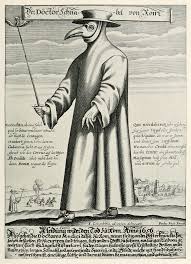
The novel is full of interesting historic events and characters.
It starts with the introduction of Sebastiano Venier. Sebastiano Venier (or Veniero) (c. 1496 – 3 March 1578) was Doge of Venice from 11 June 1577 to 3 March 1578. He was the commander of the Venetian contingent at Battle of Lepanto (7 October 1571), in which the Christian League decisively defeated the Turks. After the peace he returned to Venice as a very popular figure, and in 1577, at the age of 81, he was unanimously elected Doge.
Sebastiano Vernier asks Andrea Palladio to design and build a church to appease God. Palladio, influenced by Roman and Greek architecture, primarily by Vitruvius, is widely considered to be the most influential individual in the history of architecture. All of his buildings are located in what was the Venetian Republic, but his teachings, summarized in the architectural treatise.

Palladio talks to Feyra about his works: Church of Santa Maria dei Servi, Façade of San Pietro di Castello, Refettorio of the Monastery of San Giorgio Maggiore, the convento della Carita.
The church that Palladio will build is in the place where the Monastery of Santa Croce on the Island of Giudecca was. Giudecca is an island in the Venetian Lagoon, in northern Italy. It is part of the sestiere of Dorsoduro and is a locality of the comuneof Venice.

The novel then continues in Constantinople. Constantinople was the capital city of the Roman/Byzantine (330–1204 and 1261–1453), the Latin (1204–1261), and the Ottoman (1453–1924) empires. Following the Muslim conquest, the former bastion of Christianity in the east, Constantinople, was turned into the capital of the Ottoman Empire, under which it prospered and flourished again.
Feyra mentions several places in Constantinople, among which Seraglio Point. The Seraglio Point is a promontory separating the Golden Horn and the Sea of Marmara. The area is where the renowned Topkapı Palace and Gülhane Park stand.
Feyra works as a kira (go-in-between woman between the women in the harem and the outside world) and doctor in Topkapi Palace. The Topkapı Palace or the Seraglio is a large palace in Istanbul, Turkey, that was one of the major residences of the Ottoman sultans for almost 400 years (1465–1856) of their 624-year reign.
Feyra works for Nur Banu, the mother of the sultan. Nurbanu Sultan (c. 1525 – 7 December 1583) was the favourite consort and later wife of Sultan Selim II of the Ottoman Empire, mother of Sultan Murad III, and de facto co-ruler as the Valide Sultan for nine years from 1574 until 1583. Even though there are a couple of theories about the origins or Nurbanu, the book uses one of them. Nurbanu’s real name is alleged to be Cecilia Vernier-Baffo. She was the daughter of Nicolò Venier, Sebastiano Venier‘s brother.
Nurbanu tells her story. Her father was Nicolo Vernier and she was living in Paros before fleeing to Constantinople. Paros is a Greek island in the central Aegean Sea. One of the Cyclades island group.
Nurbanu talks about her son, Sultan Murad III, as a cruel ruler. Murad III (4 July 1546 – 15/16 January 1595) was the Sultan of the Ottoman Empire from 1574 until his death in 1595. Selim died in 1574 and was succeeded by Murad, who began his reign by having his five younger brothers strangled. His authority was undermined by the harem influences, more specifically, those of his mother.
The main topic of the book is the plague in Venice. There were 22 outbreaks of plague in Venice between 1361 and 1528. The plague of 1576–1577 killed 50,000 in Venice, almost a third of the population.

Anibale Canto, who is a doctor, wears the usual attire to treat the plague. . The costume, originating in the 17th century, consisted of an ankle length overcoat and a bird-like beak mask often filled with sweet or strong smelling substances (commonly lavender), along with gloves, boots, a brim hat, and an outer over-clothing garment.

In Venice Anibale and Dr Varnetti meet at Campo de Santa Maria Nova.
Varnetti tries to cure those sick of the plague with a concoction called Four Thieves vinegar. Four thieves vinegar (also called Marseilles vinegar) is a concoction of vinegar infused with herbs, spices or garlic that was believed to protect users from the plague. The usual story declares that a group of thieves during a European plague outbreak were robbing the dead or the sick. When they were caught, they offered to exchange their secret recipe, which had allowed them to commit the robberies without catching the disease, in exchange for leniency.
Anibale creates his hospital on the island he calls Lazzaretto Novo. Lazzareto Nuovo has been used as quarantine for sick persons and suspect goods arriving in Venice. In 1468, by decision of the Serenissima Government, the island started to be used as a quarantine area. The name “Nuovo” (new) came from this era, it was used to distinguish the Island from the other Lazzareto already existing in Lido.
Anibale gets the help of the Siters of the Miracoli. Santa Maria dei Miracoli is a church in the sestiere of Cannaregio. Also known as the “marble church”, it is one of the best examples of the early Venetian Renaissance.
The book mentions Nicholas and the children’s crusade in comparison to the enterprise carried out by Anibale. The Children’s Crusade is the name given to a disastrous Crusade by European Christians to expel Muslims from the Holy Land said to have taken place in 1212. The traditional narrative is probably conflated from some factual and mythical notions of the period including visions by a French or German boy, an intention to peacefully convert Muslims in the Holy Land to Christianity, bands of children marching to Italy, and children being sold into slavery.

































